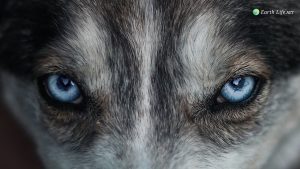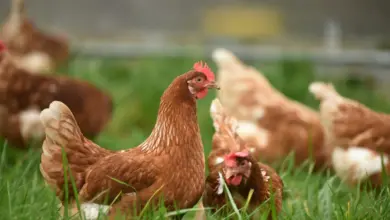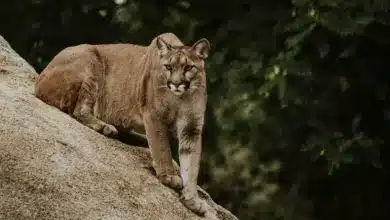What Eats A Wolf?
What Eats A Wolf? What do wolves eat?
Generally speaking, the wolf is the top dog in its ecosystem. That means that while wolves will try to eat almost any other animal that crosses their path, from the largest to the smallest,
But there is one exception. A large grizzly will sometimes dig up a mother wolf’s den and eat the wolf cubs. And very occasionally, when a grizzly fights and kills a grown wolf, it will eat the wolf carcass. But grown wolves are powerful and can inflict a lot of damage on a grizzly, so grizzlies don’t generally try to make a meal of them—it’s just more risk than it’s worth.
For their part, wolves have been known to gang up on a grizzly cub, kill it, and eat it. The natural world is a tough place to live. . . .
What Eats Wolves
Wolves are the top predators in their natural habitats. Carnivores are predators that prey on a variety of animals including deer and elk. They also prey upon rabbits, small rodents, beavers, and moose. Wolves can become prey at times. When given the chance, wolves will be eaten by a variety of predators and scavengers.
Carnivores at the top of the food chain and predators on many species including large ungulates like moose, and smaller mammals such as beavers and bunnies. They can hunt in packs to take down large game.
The wolves are also threatened by omnivorous scavengers as well as carnivorous predators. These relationships provide insights into the dynamic food web in habitats that wolves inhabit.
Wolves are not the only predators that hunt large animals
Wolves must be cautious of large carnivores that are a threat to them in areas where they overlap. Bears and large cats such as tigers and cougars are among these big predators.
These solitary hunters, due to their size and strength can easily overpower and kill wolves, even if they are caught unprepared.
Wolves have developed behaviors that minimize these risks. In areas with overlapped habitats, larger carnivores may hunt wolves.
Bears
Predation by wolves is common among grizzly bears and black bears. Bears are larger and stronger than a single wolf.
The wolves can be very powerful and are known to kill and eat wolf puppies and adult wolves of the same pack. Usually, this happens when the den of the wolves is discovered. The bears will steal the wolf kills and displace the pack.
Mountain Lions
Mountain lions are also known as cougars or pumas. They are formidable predators of wolves. They are effective wolf predators because of their stealthy hunting style, ability to ambush and stalk prey, as well as the way they can leap on it.
A single mountain lion is more powerful than a wolf. When defending territory or pups, wolf packs can drive away or kill cougars.
Other Big Cats
As competitors, wolves are killed by tigers, jaguars, and leopards in habitats that overlap. Amur tigers have been observed in Russia preying on gray-colored wolves. In Africa, Asia and North America, jaguars and leopards are able to take out wolves. They can crush the spine or skull of a wolf with their powerful claws and bites.
Preventing Predation
To avoid being prey, wolves have developed several adaptations to their behavior.
- Sharp senses– Wolves have excellent senses of smell, hearing, and sight.
- Pack hunting – Wolves are coordinated to hunt large game in packs. They can do this because they are able to reach the prey beyond the reach of single predators.
- Complex Communication Whines, barks and howls are used to coordinate movements and warn one another of danger.
- Territorial Marking Urine and scat are used to mark the boundaries of a territory. This is done to deter competitors.
- Den Defense – Fierce pack defence protects pups from predator attacks at the den site.
- Avoidance Wolves will generally avoid areas where there are major predators.
- Speed — Wolves can reach speeds up to 65 km/h when fleeing or pursuing danger.
Even though they are the top predators, larger carnivores can still prey on wolves. Scavengers are also important in the cleaning of wolf remains. In most cases, group hunting and other evolved survival strategies help to minimize wolf deaths in the wild.
The complex social structure of the wolf pack helps it to be strong and resilient against external threats. Although competition is present in nature, the wolves are at the top in habitats that they thrive.
Scavengers
Omnivorous species can consume wolves that are dead or dying. They include:
Bears
The black and grizzly bears are both willing to eat wolf carcasses. Scavenging by bears is an important source of food for them when they emerge in spring from hibernation. Bear scavenging recycles nutrients into the ecosystem.
Coyotes
Coyotes, as fellow canids will scavenge the carcasses of wolves. The coyotes wait until the wolves are done eating and have moved on to the next carcass before they approach it. They may also feed off wolf carcasses that they find. These scavengers are very adaptable.
Crows & Ravens
Crows and ravens are omnivorous intelligent birds that readily consume wolf carcasses for food. They may even eat the eyes of wolves that are still alive but injured. They also eat organs rich in nutrients.
Vultures
The vultures are searching for carrion and soar to the skies. When vultures find a dead wolf, they circle and tear pieces of flesh with their hooked beaks. Their stomachs are extremely acidic, which helps neutralize bacteria and parasites.
Insects & Maggots
Insects such as blowflies and meat flies can detect animal carcasses from a distance. They lay their eggs on the wolf carcass and then hatch them into maggots. Maggots eat and destroy soft tissues. They aid in decomposition.
Foxes
Foxes feed readily on the carcasses of wolves they find. They will eat organs and stomach contents. In winter, when prey is scarce, foxes may find it easy to eat carrion.
Wolf Cannibalism
In extreme situations of scarcity of prey, wolf packs can turn to cannibalism by consuming weaker members of the pack. This is not common due to the strong social bonds that exist in wolf pack. When wolves are starving, they will often focus on other species of prey first. Cannibalism includes:
Wolf Pups
The adult wolves will eat and kill any pups that are sickly, weak or deformed when they were born. This is most common during times of stress, when resources are limited. The survival of the entire pack is improved by removing unhealthy pups.
Pack Members
Other wolves in the social pack will feed on the corpse of an adult wolf if it dies due to illness, injury or starvation. This prevents it from being wasted. It is a way to get some food when there are no prey around.
Attacking Weaker Wolves
In extreme times of famine, stronger members of a wolf pack may kill weaker members to get food. The weakest are the elderly, young and injured. The only time this desperate act is committed is when all other sources of food are gone.
Human Impact on Wolf Populations
Since ancient times, humans have been hunting wolves as they are perceived as a threat to livestock and competitors for game. Extermination campaigns were launched as civilization grew to eliminate wolves.
In Europe, North America and other parts of the world, wolves were poisoned, shot and trapped. By the middle of the 20th century, only a few isolated populations were left.
In recent decades, public opinion has shifted due to modern conservation ethics. Wolf protection laws have also been strengthened. In several parks, wolves have been reintroduced to habitats that were once exterminated. Under endangered species laws, their populations are slowly regaining.
While the historical persecution of wolves decimated their populations, today’s rehabilitation programs are aimed at restoring stable packs back to their original ranges. Continuing habitat conservation and education of the public will allow wolves to thrive again in the wild.
The conclusion of the article is:
Although wolves are master predators, they still fall victim to other animals in the food webs that surround them. This includes bears, cats and scavengers. Their evolved pack behavior confers strengths that tip the scales in favor of the wolf.
The wolf can thrive as an apex prey despite the dangers. Respect for the Wolf reminds us that, even dominant species are at risk from competition. They must adapt constantly to survive and prevent becoming prey.





